There’s been a disturbance in the Force, and its name is Star Wars Day.
Unless you’ve spent the last decade living inside a giant space slug hanging around with mynocks, its likely you’ve at least heard of Star Wars Day, a commemorative day created to celebrate—what else—the Star Wars media franchise.
The date, celebrated annually on “May the Fourth,” owes its entire existence to a cringe-worthy pun echoing one of the Star Wars universe’s most central catch phrases: “May the Force be with you.”
This year, OnAllCylinders is getting in on the celebration by talking about our two favorite Falcons: The Ford Falcon from Dearborn, Michigan and the Millennium Falcon from the Planet Corellia, a spaceship piloted by Han Solo—aptly played by Harrison Ford, no less.
Perhaps you’re already intimately familiar with Star Wars Day, in which case, you’re safe here—we’re fans, too. This article is for you.
On the other hand, maybe your lone experience with Star Wars is a vague awareness that it’s about space wizards with laser swords.
You should still give this a read, but we’ll be more spasmodic than a startled Ewok if you get all the jokes.
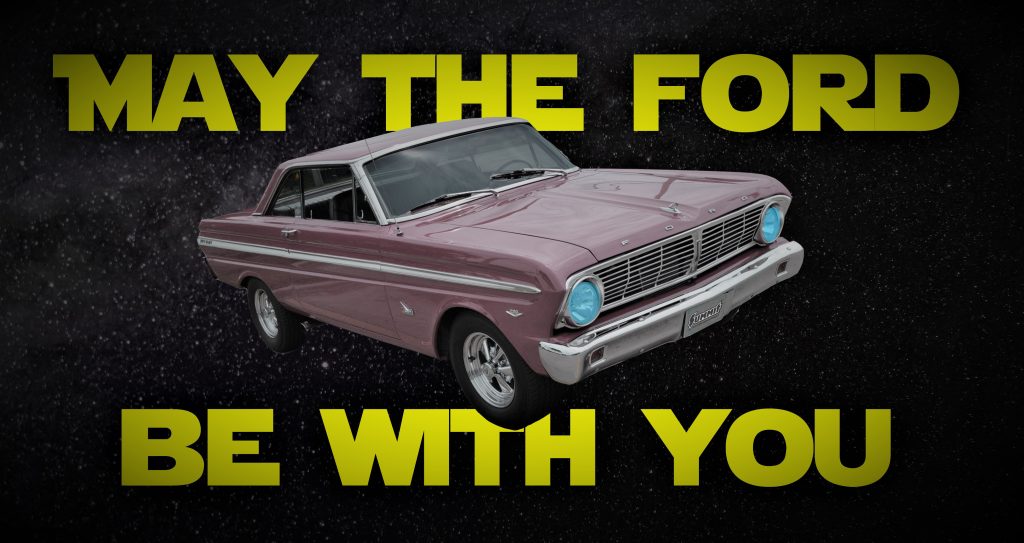
Ford’s Falcon
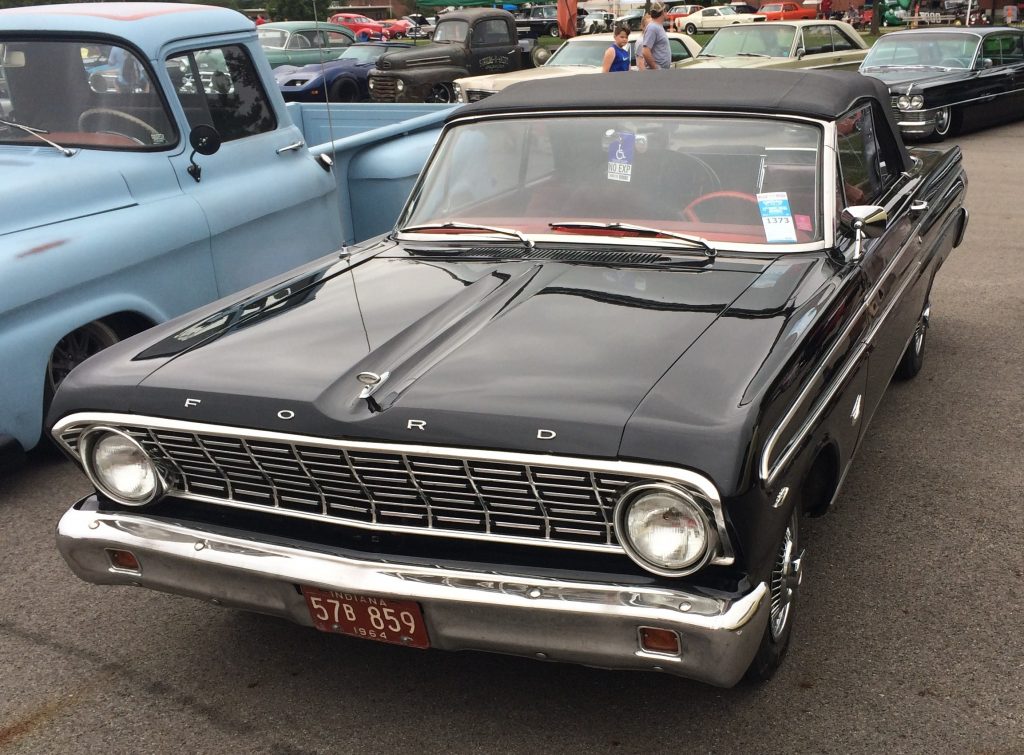
Introduced in the fall of 1959, the Ford Falcon lead a wave of new vehicles that promised drivers smaller, lighter, and more economical alternatives to their gas-guzzling forebearers of the ‘50s. It quickly became Ford’s best-selling sedan and the leader in its segment, outselling competing compacts like the Chevy Corvair and Plymouth Valiant.
Initially offered in two- and four-door sedan body styles, the Falcon line eventually expanded to include two- and four-door station wagons and the Falcon Ranchero pickup truck.
The earliest stock Falcons left plenty to be desired performance wise, with the only engine available for the 1960 model being a 144ci inline six capable of pumping out an astonishing…90 horsepower. Woot. Things weren’t much better for the 1961 model year, when the engine grew to a 170ci inline six that added a modest 11 hp.
In 1963, Ford aimed to show the car-buying public that hokey 1-barrel carburetors and ancient inline six engines are no match for a V8 at your side.
The Ford Falcon Sprint gave the line its biggest performance boost via a 260ci V8 that churned out 164 hp—powerful enough to outrun your local Bulk Cruisers, but don’t expect it to tackle the Kessel Run in less than 12 parsecs.
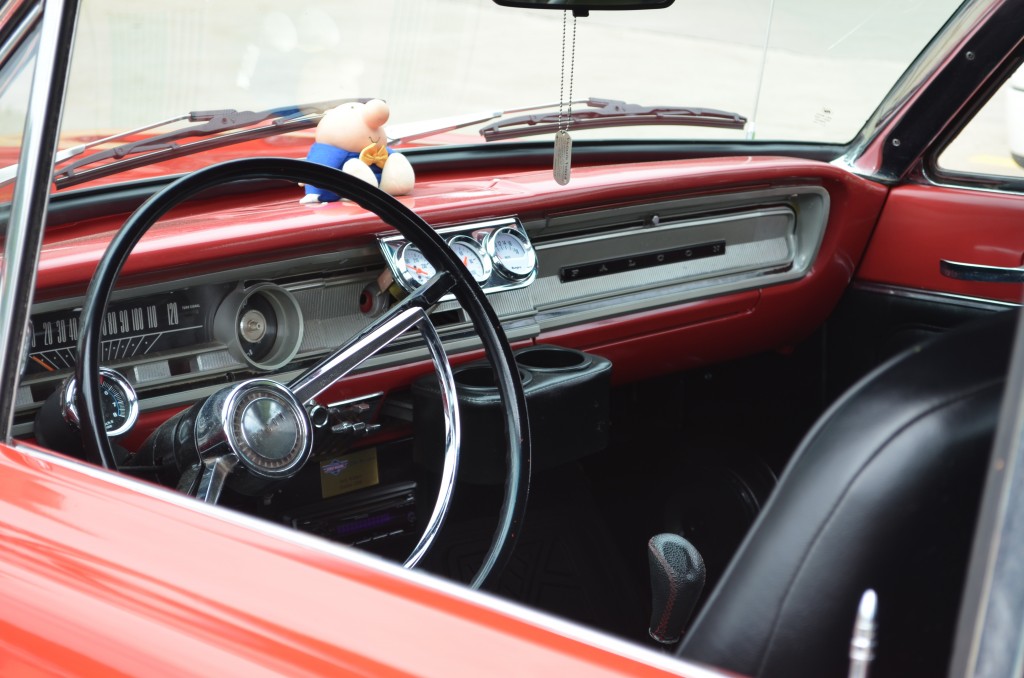
The first-generation Falcon Sprint served as the basis for the sportier Ford Mustang, which utilized many of the same interior, chassis, drivetrain, and suspension components. Ironically, the introduction of the Mustang contributed toward the downfall of the Falcon in North America, stealing market share from its older sibling.
Though Ford discontinued the Falcon nameplate in North America in 1971, the vehicle is highly regarded in the hot rodding community for its simplicity and customizability. Much like the Mustang that replaced it, the Falcon remains an incredibly popular base for a project car.
For more information on the Ford Falcon, check out our ride guide here.
(Harrison) Ford’s (Millennium) Falcon
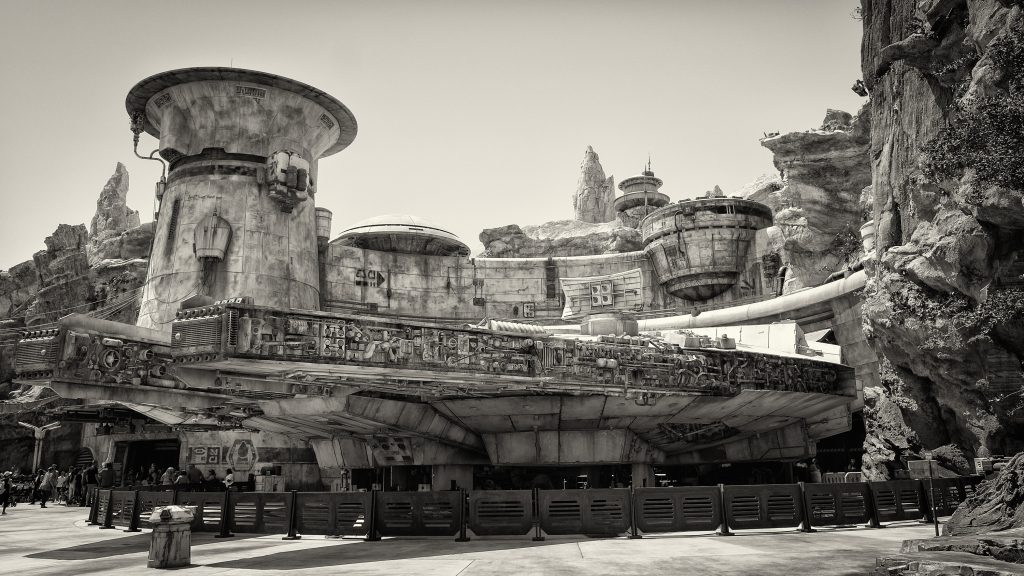
We know exactly what you’re thinking: “The Millennium Falcon is so similar to the Ford Falcon in appearance. How can I possibly tell them apart?” Believe it or not, there are some subtle differences.
The Millennium Falcon is a modified YT-1300 light freighter built by Corellian Engineering Corp. in 60 BBY—which is to say, a long time ago, in a galaxy far, far away. Whereas the Ford Falcon was mass produced, the Millennium Falcon is technically one-of-a-kind.
The Millennium Falcon features a Quadex power core that sends power to twin Girodyne SRB42 sublight engines that have been heavily modified to be more powerful than those found in a Ford Falcon or, for that matter, the SpaceX Falcon 9, probably.
Other notable features include a hyperdrive system, modified AG-2G quad laser canons, an Imperial IFF transponder, and comfortable seating for six passengers.
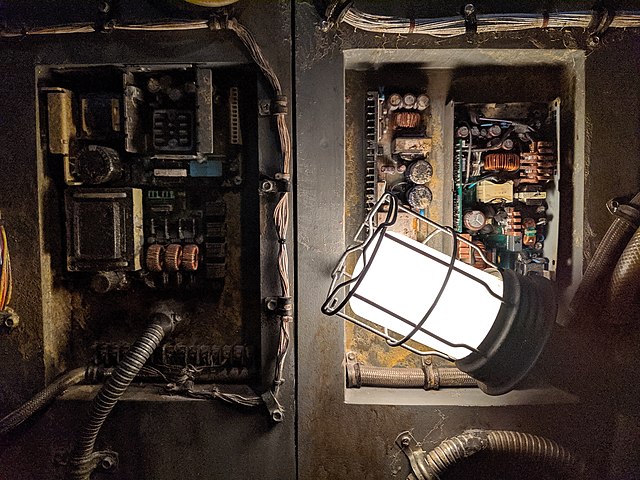
Cory Doctorow | CC BY-SA 2.0 )
She may not look like much, but she’s got it where it counts, kid.
Also, most critically, none of those things we just said are real. Because the Millennium Falcon is not real. It is a complete work of fantasy.
What do These Falcons Have in Common?
We’re glad you asked. The answer? Literally nothing outside of the names, and even that’s a bit of a reach, if we’re being honest.
Still, May 4th is Star Wars day, and we’re not above drawing nonsensical parallels for the sake of nerdiness. Here are a few more things these two Falcons have in common:
- A storied history of supporting all manner of modifications, not all of which would be considered street/atmosphere legal.
- Owners who would balk at being described as scruffy-looking nerf herders.
- Reclaimed from a desert scrap yard by someone named Rey or Ray.
- Offer plenty of cargo space.
- Infinitely cooler than than those awful speeders used by the swoop gang in Book of Boba Fett.
- Both often require a lot of repairs over the years to keep running.
Stick around for next year, when we re-publish this same article as a “Special Edition” with additional bonus content no one really asked for.

I like the falcon article…. I would like to hear back from your tech on the falcon 260 cu inch since I own a 1963 1/2 falcon sprint with matching numbers. My question is what can I do to get more performance out of this motor without changing it out?
Thanks Ron
Hey Ron, it all depends on what you’re comfortable with modifying. A familiar recipe would be something like new cylinder heads, an intake, and headers–but you can scale up or down as much as you’d like. For a more precise answer, we recommend that you click here to reach out to the Summit Racing tech folks directly. They know an awful lot about the Ford 260ci V8–they’ll be able to build a parts list to give your Falcon a bit more oomph.
In fact, coming back to your comment a few months later, I found this article that’ll help you on your way. Since the 302 and 260 are similar, this has plenty of good info for you: Waking a Stock Ford 302 Small Block with Simple Bolt-Ons
…
Hope this helps!